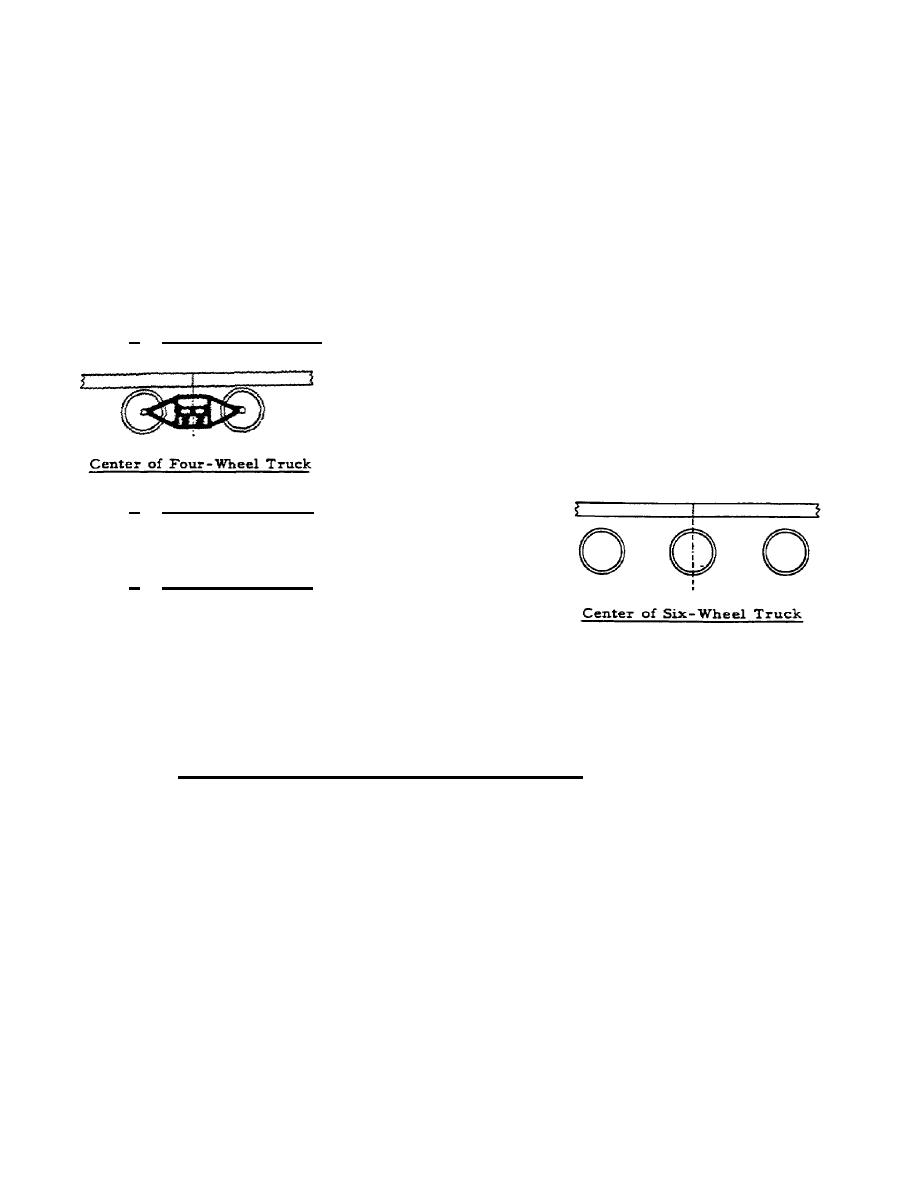
motion. And the brake wheel can be lowered or removed to make loading the
flatcar easier. Loading rules specify certain clearances around the brake
wheel to make sure it is accessible at all times. More about clearances is
given when car loading rules are discussed in section II.
1.4. TRUCK CENTERS
Since loading rules are often expressed in terms of the location of
truck centers, it is important for you to understand what the term means.
Quite simply, the truck center is the center of the truck regardless of the
number of wheels. How to find the centers is discussed in the following
subparagraphs.
a. Fourwheel truck. In a fourwheel truck, the center of its bolster
is the same as the center of the truck. A chalk mark placed on the side
sill directly above this point can help you to find
the spot while loading the flatcar. The sketch
shows how to mark the center of a fourwheel truck.
b. Sixwheel truck. The center of a six
wheel truck is the center of the middle axle, as
sketched here.
c. Center casting. The most accurate
method of locating the truck center is by
finding the center casting, or the place where
the underframe joins the truck, identified on figure 1.4 as the center
plate.
1.5. WEIGHT LIMITS
Although there are no standard dimensions for commercial cars, the
following data describe flatcars commonly used on railroads in the United
States. The Official Railway Equipment Register should be consulted for
descriptions of specific cars to be used.
7



 Previous Page
Previous Page
